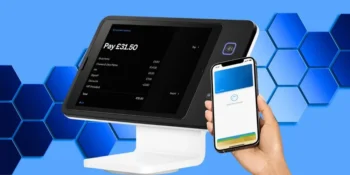Embedded web development has emerged as a crucial component in the Internet of Things (IoT), enabling the creation of connected devices with web-based interfaces. This comprehensive exploration delves into the intricacies of embedded web development, unraveling its fundamental principles, key components, recent innovations, notable applications, and its transformative impact on reshaping the landscape of IoT devices and smart technologies.
Understanding Embedded Web Development
Embedded web development involves the creation of web-based interfaces and applications that run on embedded systems, such as microcontrollers, single-board computers, and IoT devices. These interfaces enable users to remotely interact with and control embedded devices via web browsers, smartphones, or other internet-connected devices.
Key Components of Embedded Web Development
The core components of embedded web development contribute to its functionality and effectiveness in IoT applications:
- Embedded Web Servers: Serve as the backbone of embedded web development, hosting web pages, APIs, and other web services on embedded devices.
- Web Application Frameworks: Provide tools and libraries for developing web-based user interfaces, handling HTTP requests, and managing data exchange between embedded devices and web clients.
- Networking Protocols: Facilitate communication between embedded devices and web clients over local area networks (LANs), Wi-Fi, Bluetooth, or cellular networks, ensuring seamless connectivity and data exchange.
Recent Innovations in Embedded Web Development
Recent innovations have propelled embedded web development to new heights, enabling the creation of smarter, more connected, and user-friendly IoT devices. Notable advancements include the adoption of responsive web design, the integration of WebSockets, and the use of Progressive Web Apps (PWAs).
Responsive Web Design
Adopting responsive web design principles ensures that web-based interfaces are optimized for viewing and interaction across various devices, screen sizes, and orientations, providing a consistent user experience on smartphones, tablets, and desktop computers.
WebSockets for Real-Time Communication
The integration of WebSockets enables bidirectional, low-latency communication between embedded devices and web clients, facilitating real-time updates, notifications, and interactive features in web-based IoT applications.
Progressive Web Apps (PWAs)
The development of Progressive Web Apps (PWAs) allows embedded web applications to leverage modern web technologies, such as service workers and web app manifests, to deliver native-like experiences, offline functionality, and app-like interactions on web browsers and mobile devices.
Notable Applications of Embedded Web Development
Embedded web development has diverse applications across various IoT domains, contributing to improved usability, accessibility, and functionality in connected devices and smart systems.
Smart Home Automation
In the smart home sector, embedded web development enables users to control and monitor IoT devices, such as thermostats, lighting systems, and security cameras, from anywhere via web-based interfaces on smartphones, tablets, or computers.
Industrial Monitoring and Control
It facilitates remote monitoring and control of industrial equipment, processes, and systems in industrial settings, allowing operators to access real-time data, diagnose issues, and optimize performance via web-based dashboards and control panels.
Challenges in Embedded Web Development
Despite significant advancements, embedded web development faces challenges that impact its widespread adoption and effectiveness in IoT applications. Addressing these challenges is crucial for ensuring compatibility, security, and performance in web-based embedded systems.
Resource Constraints
Embedded devices often have limited processing power, memory, and storage capacity, posing challenges for developing and deploying web-based applications with rich graphical interfaces, multimedia content, and real-time interactions while minimizing resource consumption and latency.
Security Vulnerabilities
The increasing connectivity of embedded devices introduces security vulnerabilities, such as cross-site scripting (XSS), injection attacks, and unauthorized access, necessitating robust security measures, encryption, authentication, and access controls to protect sensitive data and prevent cyber threats.
Future Trends in Embedded Web Development
The trajectory of embedded web development indicates exciting trends that will further redefine its capabilities and applications in IoT ecosystems. These trends promise to enhance interactivity, intelligence, and interoperability, ushering in a new era of connected devices and smart technologies.
Artificial Intelligence Integration
Integrating artificial intelligence (AI) technologies, such as machine learning and natural language processing, into embedded web development enables smarter, more intuitive IoT devices capable of personalized interactions, predictive analytics, and autonomous decision-making.
Edge Computing and Fog Computing
Adopting edge computing and fog computing architectures enables embedded devices to perform data processing, analytics, and decision-making at the network edge, reducing latency, bandwidth requirements, and reliance on centralized cloud servers for enhanced responsiveness and scalability.
Conclusion
Embedded web development plays a pivotal role in driving innovation and connectivity in the Internet of Things (IoT) landscape, enabling the creation of web-based interfaces and applications for controlling, monitoring, and interacting with embedded devices remotely. From smart home automation to industrial monitoring and control, the impact of embedded web development extends across diverse IoT domains, reshaping how we interact with connected devices and smart systems. Despite challenges, ongoing innovations in responsive web design, WebSockets, and Progressive Web Apps (PWAs) promise a future where embedded web development continues to push the boundaries of what is possible in IoT applications, unlocking new opportunities for interactivity, intelligence, and interoperability in connected devices and smart technologies.










